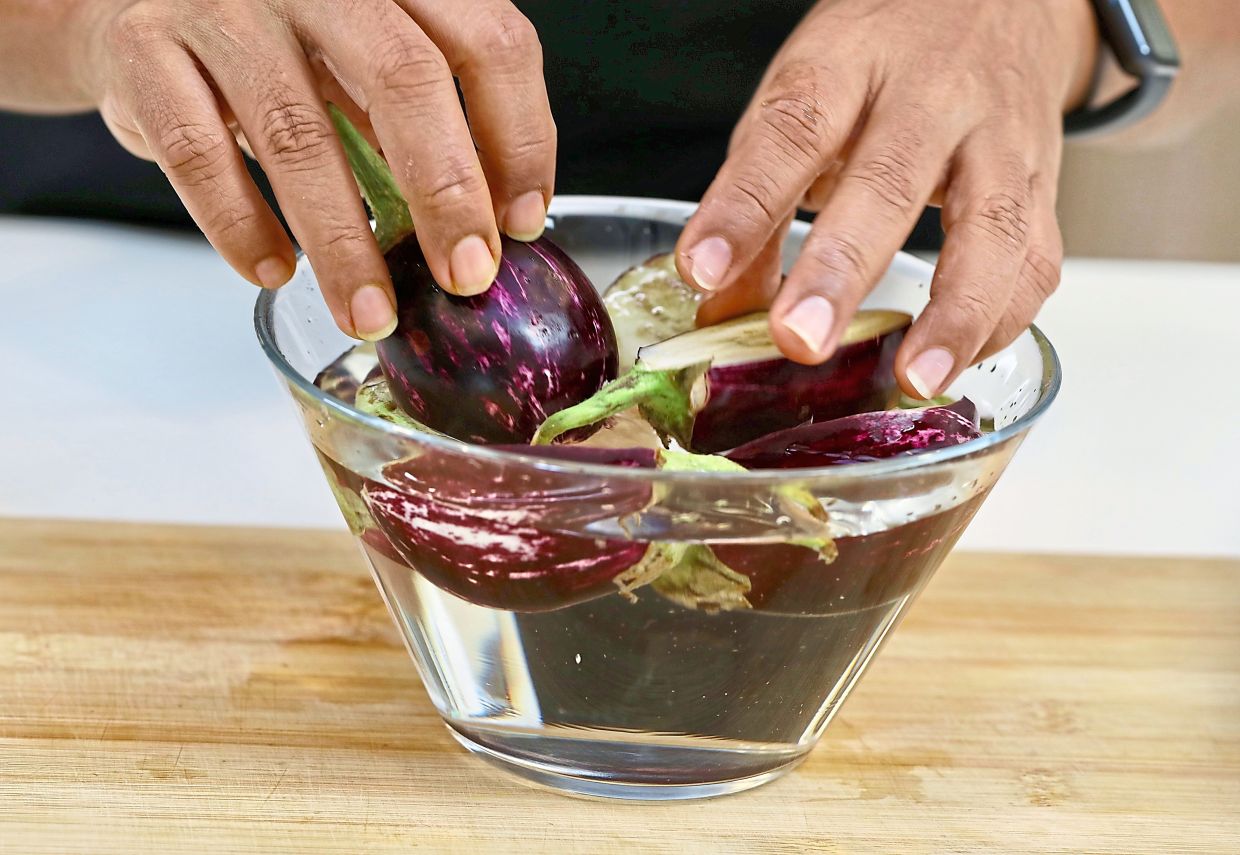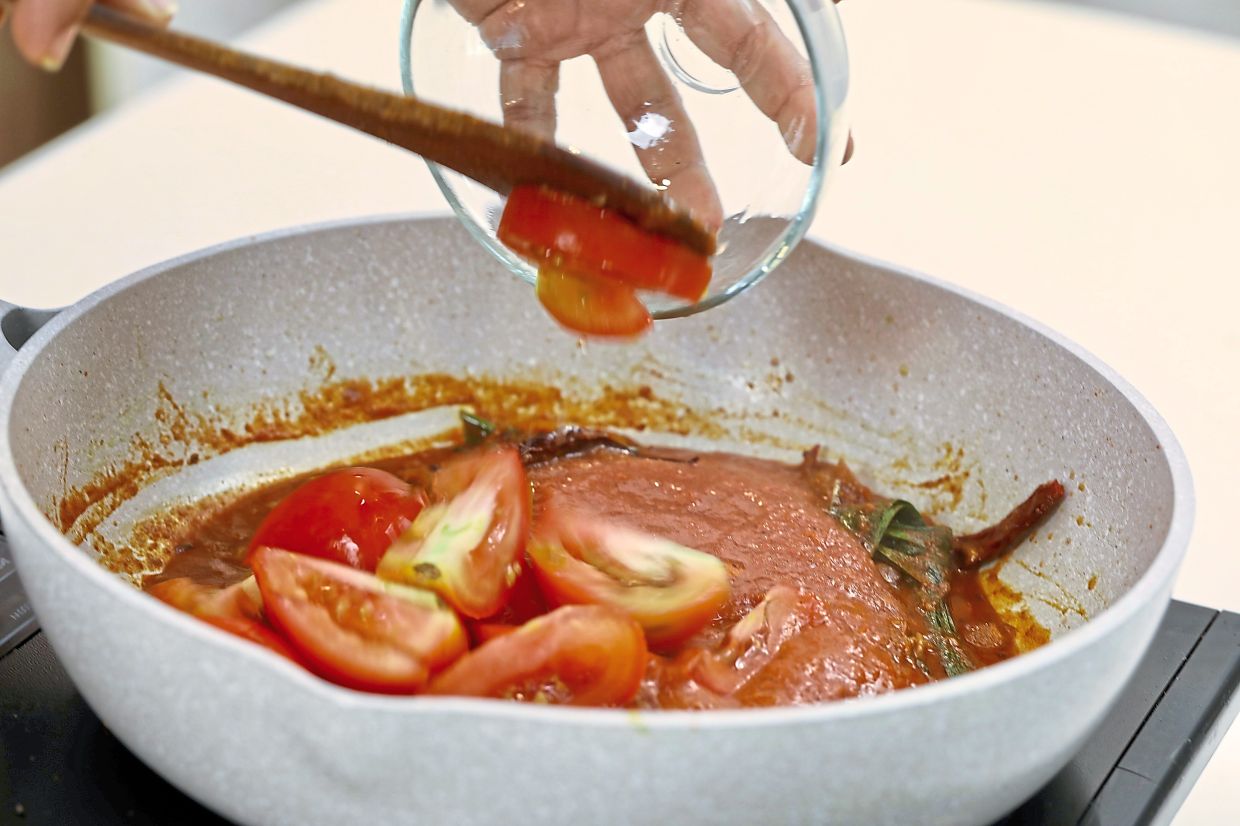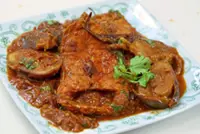Fenugreek fish sambal for Deepavali. — Photos: Low Lay Phon/The Star
“TRY this fish sambal.”
As soon as my mother urged me to taste it a few years ago at our home in Penang, I thought it was the most delicious dish I had ever tasted – one of many cooked by her.
It didn’t look or smell like the ubiquitous fiery red sambal: the aroma was altogether different.
“I used a lot of fenugreek,” she said.
At first glance, it may look like a thickened version of fish curry, but there is no fish curry powder in this recipe.
The star of the dish is fenugreek, or methi (in Hindi), venthayam (Tamil) or halba (Bahasa Malaysia).
It is a herb with seeds that are used as a spice in cooking.
The seeds of golden granules resemble bee pollen.
The annual plant is used in both cooking and traditional medicine for its aromatic leaves (kasuri methi) and seeds.
The leaves and seeds are used mostly in Indian cuisine, and are prized for their flavour and potential health benefits, said to include blood sugar control and in aiding digestion.
For this recipe, I use both the seeds and dried fenugreek leaves, including a special addition of toasted fenugreek powder.
Interestingly, when the seeds are toasted and ground, the bitterness disappears and evolves into something sweet and nutty.
The leaves added at the end of the recipe act like a herbaceous perfume that lifts the dish to another level.
For context, fenugreek seeds form the backbone of spices in a fish curry masala.
Aside from fenugreek, other components contribute to the robust, complex flavours of the sambal – including ginger-garlic paste, chilli paste and roasted tomato purée, all of which can be made in bulk and frozen for future use.
When I first tasted this at home, I realised how a humble seed like fenugreek could completely redefine sambal, making it earthy, mellow and unforgettable.
One important note: gingelly oil is also known as sesame oil, but should not be confused with Chinese sesame oil.
You can also use mustard seed oil for this recipe.
Fenugreek Fish Sambal
Marinade
300gm fresh golden snapper (jenahak) steaks
½ tsp toasted fenugreek powder (see directions)
½ tsp turmeric powder
1 tbsp chilli powder
⅛ tsp of salt
Sambal paste
3 tbsp gingelly oil (sesame oil)
1 pandan leaf
4 dried red chillies
½ tsp mustard seeds
½ tsp fenugreek seeds
½ tsp fennel seeds
1 stalk lemongrass
2 sprigs curry leaves
6 shallots, finely sliced
1 tbsp ginger-garlic paste
1 cup hot water
1 tsp salt
1½ tsp toasted fenugreek powder
½ tsp turmeric powder
½ tsp sugar
2 tbsp chilli paste/cili boh
4 tbsp roasted tomato puree
2 red tomatoes, sliced into wedges
½ tsp chilli powder
½ cup hot water
1 cup tamarind juice (extracted from 30gm of tamarind pulp, steeped in hot water)
3 small purple brinjal, halved (place in cold water to prevent darkening)
1 tsp kasuri methi (store-bought dried fenugreek leaves)
3 sprigs fresh coriander leaves, finely chopped
Directions
Coat the fish with marinade ingredients. Keep covered in the fridge for 45 minutes.
Toast one teaspoon of fenugreek seeds in a dry pan until warm and aromatic. Grind in a food mill and store excess in the freezer.
Blend equal amounts of garlic and ginger with a little water into a puree.
For chilli paste, remove seeds from dried red chillies and soak in hot water until soft. Blend to make a puree.
Cut a large red tomato into quarters and roast in a pan without oil on the stovetop until charred. Let cool and puree in a blender.
Heat a heavy-bottomed pot over medium flame. Pour in the gingelly oil.
Once hot, add pandan leaf, dried chillies and mustard seeds.
Fry until mustard seeds pop.Add fenugreek and fennel seeds, lemongrass and curry leaves. Stir until fragrant. Watch the heat to make sure it does not burn.
Add the onions and cook until they begin to brown. Add ginger-garlic paste and mix well.
Fry for about five minutes. Pour in hot water and add salt.
Stir and reduce the heat. Let it cook for five to seven minutes.
Add roasted fenugreek powder and turmeric powder. Stir and add more hot water if the mixture is dry, but make sure it is not too thin and watery. Cook for three minutes.
Add chilli paste and cook until the oil separates – this will take five to seven minutes.
Add tomato puree, fresh tomatoes and chilli powder. Mix well to form a gravy.
More hot water can be added if preferred. Simmer for about seven minutes on low heat.
Add tamarind juice and simmer for three minutes. Add in the brinjal and cook until vegetables are soft. This can take up to 15 minutes on medium heat. Remove the lemongrass and pandan leaf.
Add in the fish and use a spoon to gently baste the fish with the gravy. Let the fish cook through for about 10 minutes. Add hot water to ensure the fish is three-quarters submerged.
Mix in the kasuri methi, and sprinkle coriander leaves on top. Switch off heat and serve.










